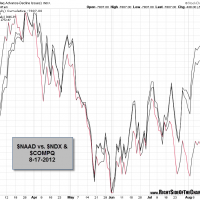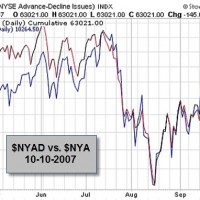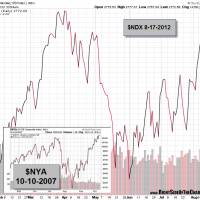…are often doomed to repeat it. As just about every angle in market analysis has been covered at one point or another, I am going to save myself some time from re-typing what’s been already been said before. First read this article which was published literally one day after THE market top (both SPX & NYA) back on Oct 11, 2007: Lack of Stock Market Breadth Warns of Danger Ahead. I’ll then leave it up to you to view the following charts and draw your own conclusions. I focused on the $NAAD (Nasdaq Advancing/Declining Issues) instead of the $NYA charts shown back in October ’07 primarily because the divergence is most pronounced right now, plus the Nasdaq 100 in particular has clearly been the lead dog pulling this market higher. Remember, these are warning signs, not die-hard predictions of what will or must happen. I plan to write a bit on that soon.
For now, the near-term trend remains up but with the numerous red flags popping up over the last few months, one should consider staying nimble and being very selective with new positions and position sizing. If when this current uptrend ends, the market could just make an orderly pullback or consolidation to digest the recent gains or it could start with a bang and move down much faster that expected, making it very difficult to exit a portfolio of longs without the proper stops, hedges, or a trading plan in place. For those already short, you also need a plan. Do you plan to cover on the first decent sell-off in the market, maybe just breaking even on the shorts that you’ve scaled into over the last couple of weeks? Do you plan to add to your short positions on a break of support(s) and shoot for much lower target levels? Where do you plan to start covering if the market just keeps moving considerably higher without any significant pullbacks? A trading plan shouldn’t only be a plan A, it should have plan B and various other contingency plans.





